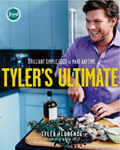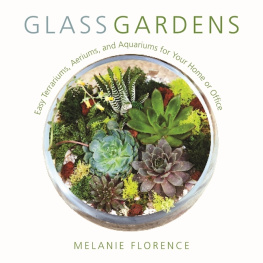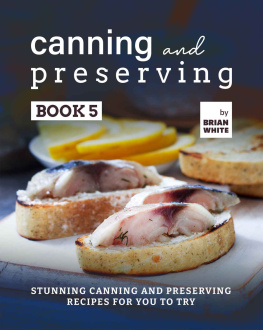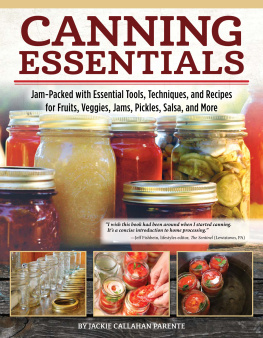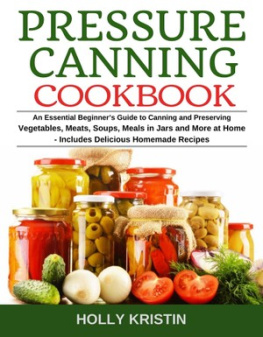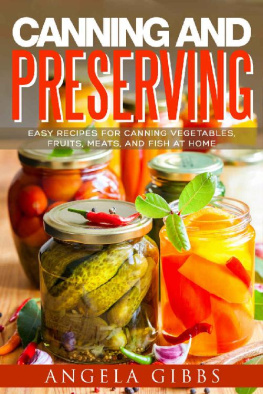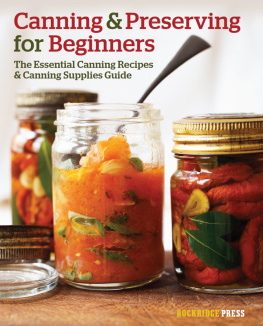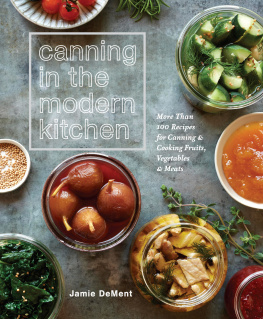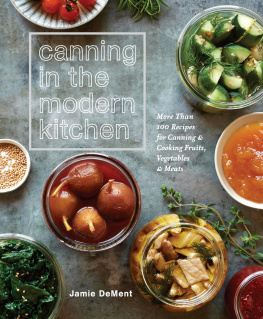Canning and preserving
for beginners:
A Step-By-Step Guide On How To Can Fruits, Meats, Vegetables, Jams, And Jellies. Eat Healthier With 200 Delicious Easy Recipes And 20 Mouth-Watering Italian Recipes .
Copyright 2020 - All rights reserved.
The content contained within this book may not be reproduced, duplicated or transmitted without direct written permission from the author or the publisher.
Under no circumstances will any blame or legal responsibility be held against the publisher, or author, for any damages, reparation, or monetary loss due to the information contained within this book. Either directly or indirectly.
Legal Notice:
This book is copyright protected. This book is only for personal use. You cannot amend, distribute, sell, use, quote or paraphrase any part, or the content within this book, without the consent of the author or publisher.
Disclaimer Notice:
Please note the information contained within this document is for educational and entertainment purposes only. All effort has been executed to present accurate, up to date, and reliable, complete information. No warranties of any kind are declared or implied. Readers acknowledge that the author is not engaging in the rendering of legal, financial, medical or professional advice. The content within this book has been derived from various sources. Please consult a licensed professional before attempting any techniques outlined in this book.
By reading this document, the reader agrees that under no circumstances is the author responsible for any losses, direct or indirect, which are incurred as a result of the use of information contained within this document, including, but not limited to, errors, omissions, or inaccuracies.
TABLE OF CONTENTS
Introduction
How Does Food Spoil?
T he principle behind food preservation boils down to one goal: to prevent food spoilage. Food spoilage is the process by which the quality and edibility of food deteriorate, or its suitability for human consumption is reduced. It can lead to it eventually being poisonous and affecting the health of the body.
Canning and Preserving Methods
Drying/Dehydrating
Drying is the oldest preservation method. Drying works to disrupt decomposition that occurs from microorganisms.
This may be done naturally in the sun, as many fruits and vegetables can be dried in this manner.
This can also be done in less sunny climates, in environments where heat is purposefully generated.
The Water Bath Method
This method involves heating food jars by keeping them in boiling water at a temperature of (212F at sea level) for a certain period.
This method is safer for jams, jellies, tomatoes, pickles, and fruits. Foods have a PH level closer to 4.6 and will need added citric acid or even lemon juice while using the water bath method to stabilize PH levels.
The Pressure Canning Method
This method of canning is used for low-acidic foods such as most vegetables, poultry, seafood, and dairy products. This method involves placing food jars in two to three inches of boiling water in a steam pressure cooker specifically designed for canning.
The temperature in a pressure cooker canner reaches 240F at sea level at 10 pounds of pressure.
The high temperature above the boiling point of water, which is 212F, is required to eliminate any chance of bacteria growth in your food.
The specific temperature can only be reached by using the pressure cooking method. A major concern for food safety is to prevent and destroy heat-resistant bacteria growth, in particular, the Clostridium botulin, which can produce deadly toxins, which can grow well in low acidic foods like meats and veggies.
Low acidic foods have a PH level of more than 4.6. Depending on the food and altitude, youre meant to cook the food jars for a specific time at the temperature of 240F or above.
Pickling and Fermenting
Basically, to make pickles or to pickle your food, what you do is to dip it in a solution that ensures the food has a long shelf life. Salting food is another complementary way of ensuring your food that can last long without getting spoilt. In ancient times, nomadic tribes of Africa and elsewhere would salt their meat to ensure it lasts many days and sometimes weeks.
Sometimes people use vinegar for pickling, and this is because vinegar is acidic enough to kill bacteria that would otherwise cause food to go bad.
Other foods are pickled in salt brine, and that is because it is a liquid that enhances fermentation.
The reason fermentation is encouraged here is that good bacteria end up developing, and that makes the food much less vulnerable to the bad bacteria. And, of course, if the growth of bad bacteria is restricted, it means your food cannot get spoilt quickly.
CHAPTER 1:
20 mouth-watering Italian recipes
Passata Di Pomodoro
Ingredients
2 kg Ripe tomatoes
Basil
Salt (just enough)
Yield: 1 kg of tomatoes = about 35ml of puree
To prepare the tomato puree preserves for the whole year, buy tomatoes that are not bruised, but firm, well red and ripe; You can choose between the coppery, cluster and round tomatoes, or the San Marzano, with an elongated shape.
Instructions
To prepare the tomato sauce, start by checking them individually, eliminating the rotten, stained or bruised ones. Remove the stalks and wash them very well 1, then leave them to drain. Cut each tomato in half and remove the seeds
Place them in a large large pot and let them dry over low heat by covering them with a lid, turning them from time to time, until they are limp and pulped. At this point, pass them with a vegetable mill (or with the special electric machine), making the sauce converge in a smaller steel pot. In the meantime, you have sanitized the jars and lids by boiling them in plenty of water or using a special sterilizer.
If the tomato puree does not seem to you to be of the right density, filter it with a little mesh strainer to remove excess water or let it thicken on the stove until it reaches the desired consistency.
Put some basil leaves inside each sanitized jar. Pour the tomato puree into the sanitized jars with the help of a funnel and taking care to leave 2-3 cm of space from the edge of the jar. Finish with a few more basil leaves and close the jars well. At this point, proceed with boiling: place the jars inside a large container, taking care to separate them from each other with clean cotton sheets, add hot water until they are covered and bring to a boil. Turn off the heat 30 minutes after the first boil and let it cool. Once the jars are cold, check that the vacuum has been done correctly: if, by pressing the cap, you DO NOT hear the "click clak", the vacuum will have formed correctly. Store the tomato puree in a cool place away from light.
If the vacuum has been done correctly, the tomato puree can be stored for a maximum of one year in a cool place away from light.
Red Sauce (With Peppers)
An excellent and delicious sauce to be used to season boiled meats (hot or cold), roasts or to be eaten spread on toasted bread to accompany cheeses and cold cuts. The recipe is that of my grandmother. I slightly adapted it using industrial tomato paste (the one in a tube, so to speak) to make it slightly lighter. With the homemade concentrate, the sauce was much tastier, but definitely heavy. With the following doses I prepare 8 jars of 100 g. Here is the recipe for this delicious pepper sauce.


